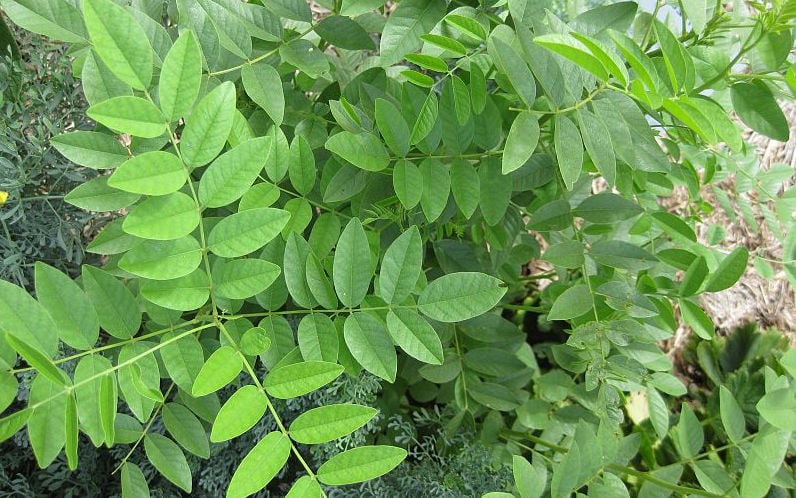Today I’m talking with herb specialist Ian Hemphill of Herbies Spices about growing that very tasty plant, licorice (or liquorice if you are in the UK). Forget the sticky black confectionary licorice – you can make your own sweet treats like licorice icecream and even chewable sticks from your own home-grown plant.
https://gardendrum.com/wp-content/uploads/2016/02/How-to-grow-and-use-liquorice-from-RWG.mp3
Licorice is a fascinating plant with a long history as Ian describes!

Glycyrrhiza glabra flower Photo Paroah han
Licorice comes made from the root of Glycyrrhiza glabra, a small perennial plant in the pea family (Fabaceae) that grows to about 1m (3ft) tall and wide. Its natural habitat is south-east Europe through to north-west Asia. It was brought into Western Europe by returning Crusaders in the 12 century and has since been widely grown throughout Europe and the UK.
Licorice has pretty, light-green foliage and small heads of bluish-grey pea flowers in summer and prefers to grow in full sun in deep, sandy slightly alkaline soil that is both moist but well-drained. A deep, alluvial sandy soil encourages the formation of long taproots and a wide root zone so there’s more to harvest. Plants like plenty of heat, which increases their sweetness, and will grow in mediterranean through to tropical climates as long as the roots don’t stay too wet. (USDA Zones 7-10). They will also tolerate frosts as they die down in winter.
It takes about 3 years for the plant to develop enough thick, fleshy roots to harvest but don’t leave it longer than that as the roots become woody and less palatable.
You can grow licorice from seed (soak them first) or by cutting off a new plant forming at the end of a sucker (stolon), which are stems that spread along the ground, or by root division.

Photo Gardenology.org
How to use licorice:
Dig up the roots as the plant dies back in autumn/fall but keep some of the smaller, newer roots for replanting for your next crop. Wash and then cut the harvested roots into small chips and either leave to air dry and then store in an airtight container, or add water and boil them down to make a thick, molasses-like extract. This can then be used in Chinese and other Asian cooking and for flavouring icecream (although the icecream will be an unappealing grey colour!), as a refreshing tea hot or cold. Pontefract cake is made from pouring the extract into small lozenge-sized molds.

Packaged licorice chips imported from Spain. Photo Chameleon
The small chips, which look like tiny wood chips, can also be chewed raw. Licorice is 50 times sweeter than sugar although the sweetness is released more slowly and is not as intense as sugar.
Licorice extract is used in a huge range of manufactured food and drink, such as Guinness beer, chewing gum and baked goods, as well as being used in cigarettes, cough syrups and pill manufacture. However often the candy sold as licorice is actually flavoured with star anise which has a similar flavour.
[Note – don’t confuse true licorice/liquorice with other plants with common names like ‘licorice plant’, which is Helichrysum petiolare. However there is a form of wild licorice native to America – Glycyrrhiza lepidota which has a similar but less intense flavour]
Where to buy licorice/liquorice plants:
Australia – Mudbrick Cottage Herb Farm (small plants); All Rare Herbs (seed)
UK – Brandy Carr Nurseries (plants and seed); Suttons Seeds
USA – Strictly Medicinal Seeds
New Zealand – Kings Seeds
